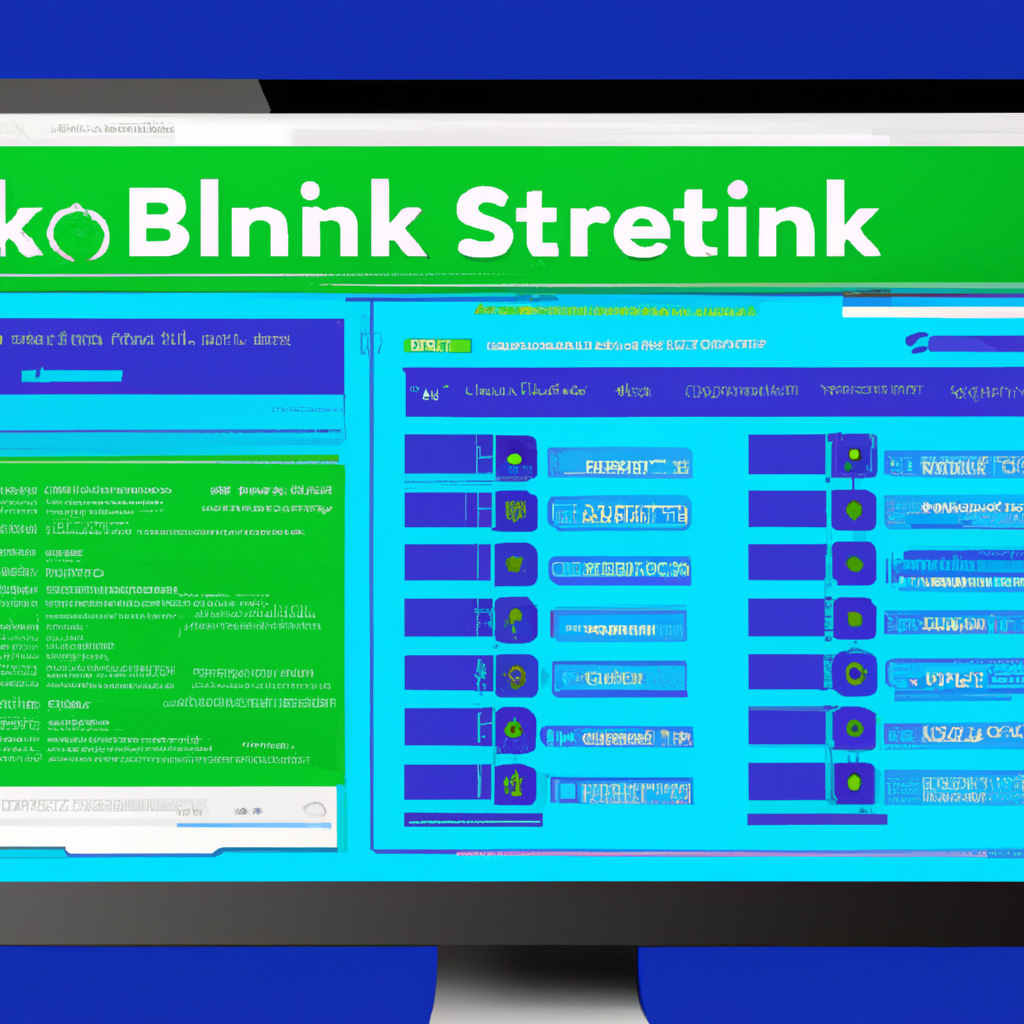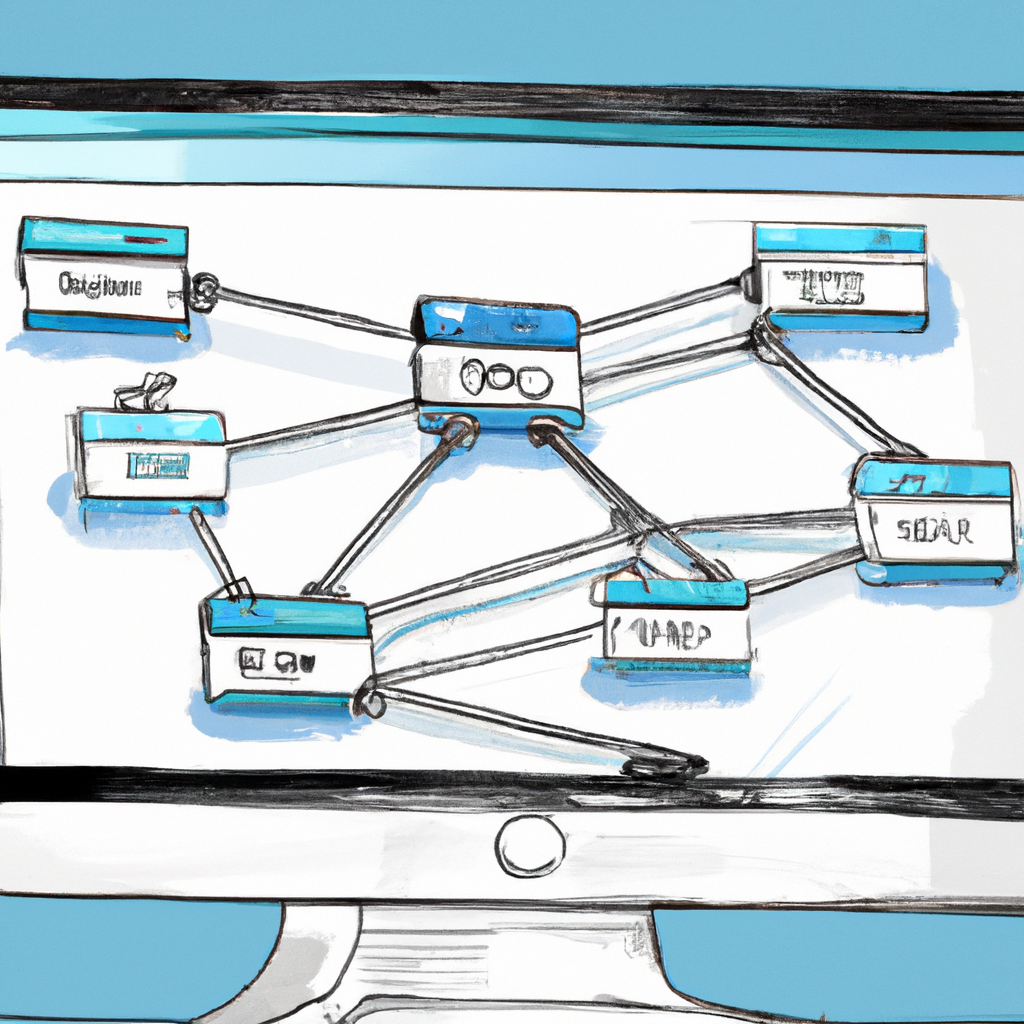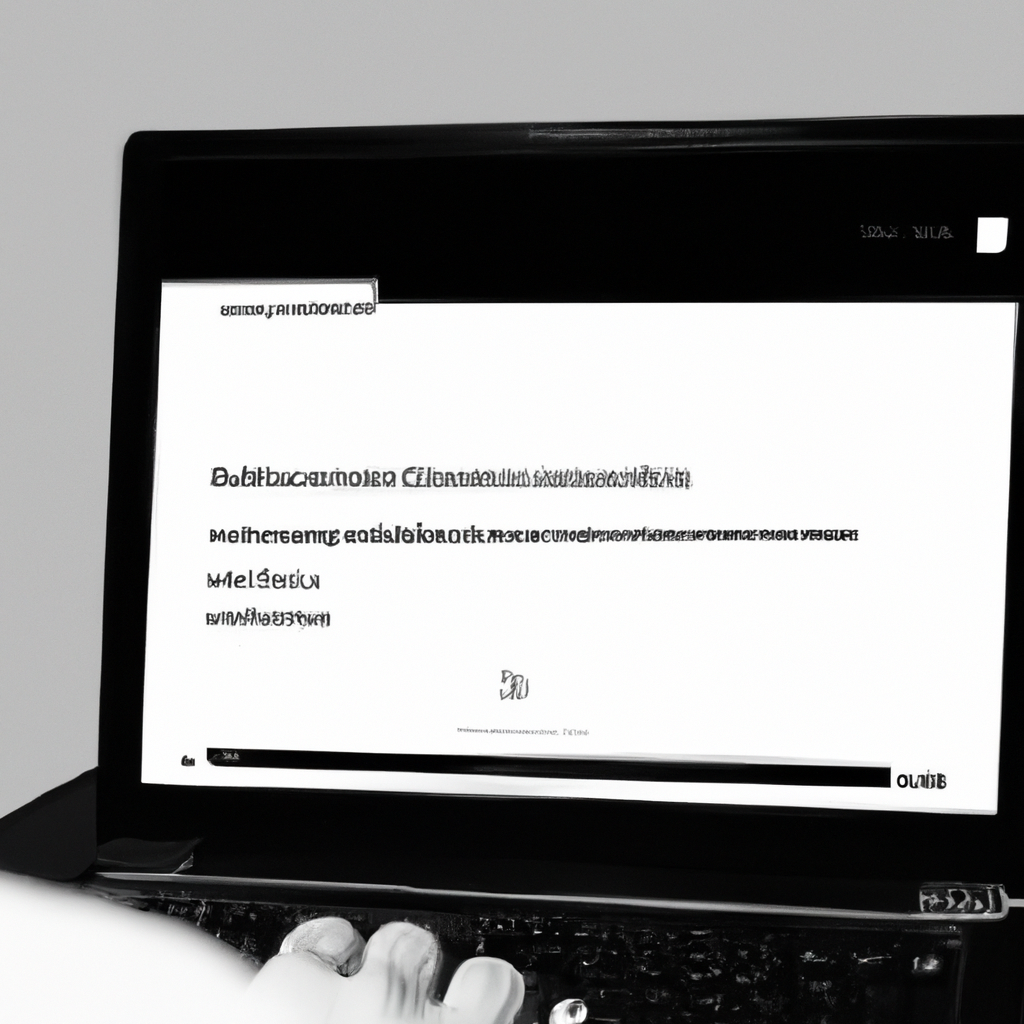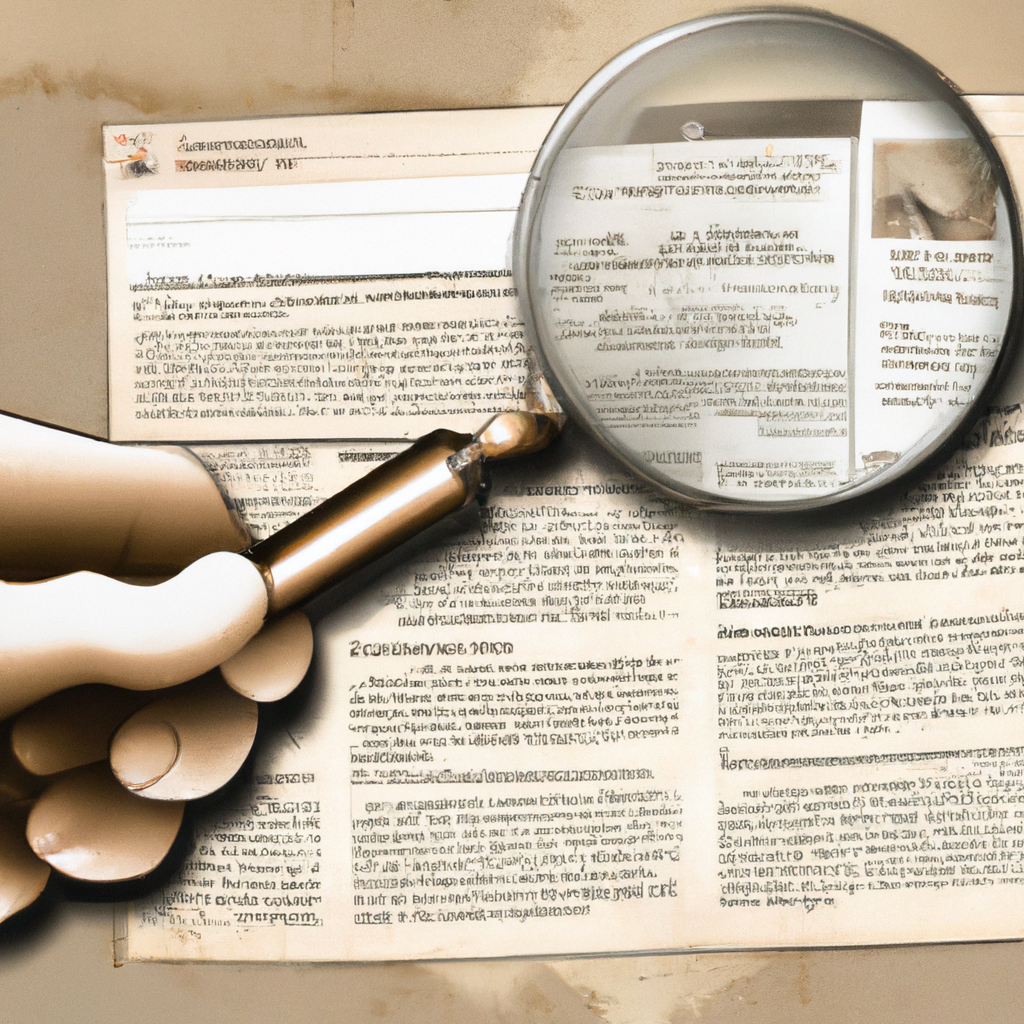Key Takeaway:
- Link exchanges are a valuable technique for acquiring backlinks to your website. They can increase your website’s authority and improve its search engine ranking, thus driving more traffic to your site.
- Reciprocal links, non-reciprocal links, 3-way link exchange, and private influencer network links are different types of link exchanges. However, it is essential to choose trustworthy partners in order to ensure that quality and relevance are maintained.
- Although link exchanges come with certain risks, such as penalties from search engines like Google, their rewards are great. High-quality backlinks from authoritative sources can have a significant positive impact on SEO and website performance.
Understanding Link Exchange for Backlinks
Link exchange has been long considered an essential practice for improving website rankings via backlinks. In this section, we will explore the definition of link exchange, its importance in SEO, and why it is still relevant in the industry. Additionally, we will debunk some misconceptions surrounding link exchanges that may hinder businesses in leveraging this powerful SEO tool.
Definition of Link Exchange and its Importance in SEO
Link Exchange is the practice of trading hyperlinks with other websites. This boosts online traffic and the quality of a website’s backlinks. It is significant in Search Engine Optimization (SEO). It helps to raise a website’s search engine ranking results.
In SEO, link building is a must. Link exchanges are one of the most popular ways to do this and increase organic rankings. Through swapping, websites can connect and share each other’s content. This is an essential element of any SEO strategy.
Many believe link exchanges are outdated in SEO. This is not true – they remain relevant and keep being a great tool for creating quality backlinks that bring traffic. As long as link exchange practices are done correctly, they can boost online visibility and user experience.
Finding reliable partners is vital when engaging in link exchanges. This stops spammy backlinks that harm a website’s image. Websites should also make sure their links are relevant and good quality. Irrelevant or low-grade links can damage their reputation.
By monitoring their backlink profile often, websites can assess how well their link exchanges are going. To gain the most from link exchanges without negative consequences like penalties or blacklisting, webmasters should follow best practices. This means avoiding over-optimization and securing high authority backlinks through safe link exchanges.
By following these guidelines, webmasters can supercharge their website’s search ranking results. They can do this through using safe link exchanges for effective SEO strategies. The rewards include more traffic, improved online visibility, and higher organic rankings.
Misconceptions about Link Exchanges
Misconceptions about link exchanges in the SEO industry are rampant. It’s believed that exchanging links with other sites can harm rankings and incur search engine penalties. This isn’t entirely true. Despite a few risks, link exchanges still have immense value and meaning for webmasters wanting to build their backlink profile and increase organic visibility.
This exchange of links with other sites gives search engines the impression that your website is an authority in your domain and enhances its overall reputation. Some may think all link exchanges are unnatural and go against Google’s rules, but this isn’t always so. As long as you link exchange safely and with reliable partners, there should be no cause for concern.
It’s true that too much optimization and spammy practices can harm SEO efforts. The same goes for every other optimization aspect. To be safe, follow some guidelines when engaging in link exchange activities. In short, don’t believe the misconceptions about link exchanges; when done properly, they can be really beneficial.
Why Link Exchanges are Still Relevant in the SEO Industry
In the ever-evolving world of SEO, link exchanges remain relevant. They can increase backlinks and website rankings. And create networking opportunities. But, misconceptions exist. It’s important to understand the different types of link exchanges – like reciprocal, non-reciprocal, 3-way and private influencer network links.
Risks like spamming and penalties exist. But, rewards include obtaining high authority backlinks following guidelines. To find high-quality websites, identify niches, check website authorities, evaluate content and backlink profiles. Or, find guest posting opportunities. Different types of link exchanges will spice up your backlink game and SEO strategy.
Types of Link Exchanges
Link exchanges are a vital element in the world of backlinks, but did you know that there are different types of link exchanges? Each type has its advantages and disadvantages. In this article, we will dive into the four sub-sections of Link Exchanges:
-
- Reciprocal Links –
where two websites agree to link to each other. Although they are not as powerful as they once were, reciprocal links still have some value and can be a useful strategy if done in moderation.
-
- Non-Reciprocal Links –
where one website links to another without receiving a link in return. These types of links are considered more valuable by search engines in terms of building domain authority.
-
- 3-Way Link Exchange –
where three websites are involved in the exchange, and every website links to each other in a circle or triangle. This type of link exchange is not as common as it used to be, and it is essential to be cautious when using this strategy as it can look spammy.
-
- Private Influencer Network Links –
a new type of link exchange that has gained popularity recently where influencers are paid to feature a link to a website within their content. These links can be valuable, but it is essential to ensure that the influencer is relevant to the niche and has genuine followers.
Reciprocal Links
Reciprocal Links can be a great way to build backlinks and improve SEO. Though, getting too many from low-quality or spammy sites can reduce a website’s rank in search engine results pages.
SEO professionals may not favor reciprocal linking, but it can still be useful in getting high-quality backlinks. It’s important to find partners you trust and exchange relevant, high-quality links.
Non-reciprocal links are also powerful for SEO.
Non-Reciprocal Links
Non-reciprocal links are a key part of link building. They rely on trust and authority, not exchange. Search engines view them as trustworthy and credible, which can boost a website’s domain authority, page ranking, and traffic.
These links are harder to get than reciprocal ones, but they’re better for a website’s performance. To get them, websites must create relevant and informative content that other sites want to link to without exchanging anything.
Reciprocal links require an agreement between two sites, while non-reciprocal links happen organically or through email outreach. Webmasters might find a website’s content informative and link to it without expecting anything in return.
Websites should focus on creating good content and building relationships with credible sites that can link back. Non-reciprocal links can bring traffic, authority, and trustworthiness without the need to compromise. So why settle for two ways when you can have three?
3-Way Link Exchange
Link exchanges, including the 3-Way Link Exchange strategy, offer webmasters many advantages. The 3-way link exchange involves three websites mutually providing backlinks. This approach follows search engine rules and is a common, successful way to get backlinks.
This strategy may not look as effectual as recip/non-recip links. But it has unique benefits when used right. 3-way link exchange breaks the usual exchange of backlinks between two sites by involving a third website. This ensures each website in the loop gets a new external backlink from a distinct source, not just reciprocal links. This also helps create natural-looking link profiles, instead of having many reciprocal links.
Using this strategy, websites can improve their authority and search engine ranking through diverse linking opportunities. 3-Way Link Exchange remains popular due to its potential to create diverse external linking opportunities. By getting links from related websites in different niches, businesses can achieve higher rankings and form long-term relationships with various audiences. In conclusion, the 3-way link exchange is a successful way to boost website visibility and attract new traffic.
Private Influencer Network Links
Private Influencer Network Links are a great tool for sites wanting to up their search engine rankings and drive targeted visitors. Companies who join forces with influencers can get a unique crowd and good quality backlinks.
One of the advantages of Private Influencer Network Links is they bring credibility and trust. When websites collaborate with trustworthy influencers, they get instant recognition from their followers. This can lead to better search engine ratings and more natural traffic.
These links also offer exclusivity. Unlike other link exchanges, these links are only available to selected partners, allowing sites to get relevant backlinks from reliable sources.
A fashion e-commerce brand might give an influencer’s fans a promo code. This can result in higher sales for the brand and more fans for both parties. This type of collaboration can be very effective, especially if the influencer has a large, engaged audience.
In the world of link exchanges, Private Influencer Network Links offer a way to get high-grade backlinks without risking Google penalties. By pairing with influencers, websites can get targeted visitors and enhance their search engine rankings, while also building trust and credibility with their followers.
Risks and Rewards of Link Exchanges
When it comes to link exchanges, knowing the potential risks and rewards is crucial for any website owner. In this section, we’ll explore both sides of the coin. We’ll take a look at the potential risks involved in link exchanges, as well as the potential rewards they can bring. Additionally, we’ll examine examples of high authority backlinks obtained through link exchanges, to give you a better idea of what these exchanges can offer.
Risks Involved in Link Exchanges
Link exchanges may be a way to raise a website’s search engine rankings. But, it is key to bear in mind the dangers. One big risk is getting backlinks from sites with low-quality content, unrelated niches, low authority or high spam score. Search engines may see these links as dishonest and punish websites linked to them, causing rankings to drop.
If you over-optimize a website’s link profile, its rankings could suffer. It will look fake and controlling. So, ethical practices must be followed when exchanging links and any black hat practices should be avoided.
Another risk of link exchanging is linking with untrustworthy sites that may do bad things, like hacking or phishing. This could damage the website, its reputation, and trustworthiness.
Monitoring a website’s backlink profile regularly is important for getting rid of any dodgy links got through link exchanges. This prevents search engines from penalizing. So, link exchanges have benefits, but they should be done carefully, while considering the risks and following ethical practices.
Rewards of Link Exchanges
Link exchanges can drastically up search engine ranking and have many benefits. They can attract new users who may not have found the site, by exposing it to new audiences. Additionally, they show that other reliable sites support and trust the website, thereby boosting its authority and credibility. Plus, quality backlinks garnered from link exchanges can lead to an increase in sales and revenue.
It’s also important to note that link exchanges increase brand visibility, as they give potential customers or partners a chance to see the company’s name on multiple websites. However, to avoid negative impacts and harm to one’s reputation, it’s key to find dependable websites to get the backlinks from.
For instance, a small e-commerce store selling luxury items boosted its SEO. They did this by partnering with influential people in the same industry for interviews and guest posts. This resulted in several high-authority backlinks, which boosted their presence online.
To sum up, link exchanges have many rewards such as increased traffic, enhanced authority and credibility, increased sales and revenue, and improved brand visibility. As good as finding a needle in a haystack is for a haircut, link exchanges can lead to high-authority backlinks, making them an essential SEO strategy.
Examples of High Authority Backlinks Obtained Through Link Exchanges
High authority backlinks gained through link exchanging are essential for SEO success. They help boost a website’s domain and page rank, leading to improved search engine rankings. Link exchanges present an excellent opportunity for website owners to get quality backlinks from websites with considerable organic traffic.
Here are some examples of high authority backlinks that can be acquired through different types of link exchanges:
| Type of Link Exchange | Website Name | Domain Authority (DA) | Page Authority (PA) |
|---|---|---|---|
| Reciprocal Links | Tech Crunch | 92 | 87 |
| Non-Reciprocal Links | The Guardian | 93 | 90 |
| 3-Way Link Exchange | Moz Blog Article | 88 | 78 |
For instance, Tech Crunch offers reciprocal links with a DA of 92 and a PA of 87. The Guardian has non-reciprocal links with a DA of 93 and a PA of 90. Moz Blog Article offers a 3-way link exchange with a DA of 88 and a PA of 78.
It’s important to keep in mind that the popularity of backlinks depends on various factors. These include website niches’ relevance, quality, and their corresponding weightage by search engines. A thorough analysis of each backlink is crucial before incorporating them into link exchange programs for optimum impact in achieving a powerful online presence.
Link exchanging can be hazardous, but with the right procedures in place, it’s possible to swap backlinks securely and effectively.
Guidelines for Safe and Effective Link Exchanges
Link exchanges can be an effective way to boost your website’s search engine ranking, but it’s important to do it safely. In this section, we’ll cover some essential guidelines for making link exchanges that are both safe and effective. We’ll discuss how to:
- Identify trustworthy partners
- Ensure relevance and quality
- Avoid over-optimization
- Monitor your backlink profile regularly, so that you can maintain a healthy website and stay ahead in the game.
Identifying Trustworthy Partners
Identifying reliable partners for link exchanges is essential to avoid bad impacts on website rankings. Choose partners with strong authority and credibility in their industries. Assess websites based on factors such as content relevancy, domain age, page authority, spam score, and the quality of their backlink profile.
Look for partners who give priority to relevance and substance, not quantity. This ensures the links exchanged are beneficial for both SEO efforts. Evaluate potential partners on the frequency and recency of updates to their website. This shows their commitment to producing quality content.
Also, review link exchange partnerships often to spot any recent changes that may affect SEO efforts. Establish clear communication with partners during link exchanges for transparency and better collaboration.
Neglecting to identify trustworthy partners can lead to penalties from search engines or poor website credibility. Thus, invest time in selecting dependable partners and building long-term relationships with them for successful link exchanges. Quality should always be prioritized for effective link exchanges that boost SEO ranking.
Ensuring Relevance and Quality
Relevancy and quality are key to successful link exchanges for backlinks. Websites should have similar niches to get higher rankings on search engines. Content must be original, informative, and useful. Authority and spam scores must be checked. Regular monitoring is needed to keep relevance and quality. This helps spot any changes in website structure or content quality.
By focusing on relevance and quality, websites can build backlinks with peer sites through link exchange. This expands reach without risking search engine penalties. Over-optimization must be avoided to keep SEO on track.
Avoiding Over-Optimization
To achieve effective SEO strategies, don’t rely on just one technique for link exchanges. Instead, use a variety of methods to vary the types of links. These include reciprocal and non-reciprocal links, 3-way exchanges, and private influencer network links.
Monitor the backlink profile regularly. Low-quality or spammy websites should not be used for link exchanges as they can harm SEO. Instead, identify trustworthy partners with relevant and high-quality content to build links. Ensure all links are relevant and high-quality to prevent over-optimization.
Don’t just use link exchanges for backlinks. Diversify SEO efforts by using guest posting opportunities too. In the past, some people used keyword stuffing or other black hat techniques for quick link exchange gains, but search engine algorithms can identify and penalize them. Therefore, ethical and diverse approaches are crucial for SEO success long-term.
Monitoring Backlink Profile Regularly
It’s key to check your backlink profile often. Track links pointing to your website and assess their quality. This way, you can detect new backlinks, make sure they’re trustworthy, and delete any low-quality or spammy links that could ruin your website’s SEO.
To monitor your backlink profile, use tools like Google Search Console, Ahrefs, Moz Link Explorer, and SEMRush. These let you identify new backlinks, find where they come from, examine their authority scores, and investigate for any issues like broken links or anchor text mismatches.
Monitoring your backlink profile regularly is important. It helps you spot potential problems early before they hurt your search engine rankings. You can improve your link building strategy by spotting which type of links are effective and which ones to avoid.
Apart from monitoring, fine-tune your link exchange strategy. Reach out to niche sites connected to your business domain or get partners with higher authority scores than yours. Changing to suit the SEO industry will help you maintain good backlink profiles while boosting traffic and interest in your site.
Finding High-Quality Websites for Link Exchange
When it comes to link exchange, the first step is finding high-quality websites to exchange links with. In this section, we’ll explore different tactics to identify websites that are a good fit for your niche. We’ll take a closer look at how to check website authority, page authority, and spam score, as well as evaluating website content and analyzing backlink profiles. Finally, we’ll cover guest posting opportunities and how they can benefit your link building strategy.
Identifying Your Website’s Niches
Niche identification is key to link exchanges that work. Break down content on your website and look for keywords and topics repeated often. This helps you pick sites with the same target audience, which are more likely to care about the content on your page.
But don’t stop there. Stay in the know with industry trends and popular events. This provides clues to where new links may come from and how they may affect your business goals. By monitoring these things, you can make the most of link exchanges.
Checking Website’s Authority, Page Authority and Spam Score
It’s important to check a website’s authority, Page Authority (PA), and spam score, to make sure they’re good quality for exchanging backlinks; this will stop low-quality links from connecting to your site, which could ruin your SEO strategy.
Tools such as Moz Link Explorer, Ahrefs Site Explorer, and SEMrush Backlink Analytics all give information about Domain Authority (DA), Page Authority (PA), and the percentage of spam links.
The table below outlines the factors to consider when checking a website’s quality:
| Factors to Consider When Checking Website Quality | |
|---|---|
| Domain Authority | Ranks the whole domain from 1-100. Shows how well-established it is on search engines. |
| Page Authority | Shows the ranking of individual pages on search engines. |
| Spam Score | What percentage of the website’s backlink profile is spammy or untrusted. |
Check both DA and PA to get an idea of how well the potential partner’s webpage or entire site does in keyword searches. Low DA and PA mean low traffic, so backlinks won’t be valuable.
Also pay attention to the spam score, as search engines penalize websites with too many spammy links. If a website has a high spam score, it can damage your SEO and SERP rankings.
Pro tip: Before doing any link exchanges, use trusted online tools like Moz Link Explorer or Ahrefs Site Explorer to check the website quality carefully.
Evaluate the website’s content like reading a book, but with keywords and user engagement.
Evaluating Website’s Content
Evaluating a website’s content is essential when it comes to link exchange. The quality of the content is vital in determining its suitability. Website owners should avoid thin or low-quality content, as this can decrease chances of obtaining high-authority backlinks and search engines may consider it manipulative.
Unique and valuable content must be included on web pages to enhance the user’s experience. Website owners should also stay away from auto-generated, duplicate or promotional content. Checking for broken links and missing images on the potential partner’s webpage is necessary.
Updated blog posts on a website can improve its search engine ranking. Relevance should be prioritized over quantity when assessing website content for link exchanges. Guest posting is an innovative marketing technique to strengthen link-building strategies.
Lastly, uncovering hidden gems and potential toxic links in the website’s backlink profile can make or break a successful link exchange. Evaluating the website content is key to link building.
Analyzing Website’s Backlink Profile
Analyzing a website’s backlink profile is key to evaluating its performance. This means looking at external links pointing to the website to check their quality and relevance.
Different aspects need to be considered:
- Number of backlinks.
- Linking domains.
- Anchor text.
- Domain authority score.
- It is also important to assess the ratio between do-follow and no-follow links.
Overall, to evaluate a backlink profile, multiple factors must be analyzed. Regular monitoring is also a great pro-tip to identify any low-quality or dangerous links that may affect SEO results. Quick removal of these links can save a site’s ranking.
For a successful guest posting experience, it’s vital to pay attention to the quality and relevance of backlinks. Analyzing the backlink profile and making the necessary updates will improve a website’s performance and lead to higher search engine rankings.
Guest Posting Opportunities
Searching for guest posting? Research sites within your niche. Look for high domain and page authority, plus content that matches yours. Check a website’s backlink profile to determine credibility.
Reach out to website owners or editors. Personalize your request and explain why your original content will benefit their audience. Show you’ve done your research on their website and existing content.
Follow these tips for success. You’ll increase the chances of securing high-quality backlinks through guest posting.
Conclusion: Leveraging Link Exchanges for Effective SEO Strategies
Link exchange is key for successful SEO strategies. Webmasters can swap backlinks safely and in moderation to enhance web page visibility and get more search engine rankings and organic traffic.
Be careful when choosing websites to exchange links with. Make sure they are relevant, have high-ranking authority, and have trustworthy content. Control and limit the number of outbound and inbound links.
SEMrush reports that mobile devices made up 60% of organic search engine visits in 2020. So, website optimization for mobile devices is essential. It can improve user experience and engagement, and lead to more organic traffic.
In short, link exchange is a powerful tool for effective SEO strategies and more organic traffic. Webmasters should focus on exchanging backlinks with relevant, high-ranking authority websites while optimizing their website for mobile devices. Following these guidelines will help them successfully leverage link exchanges.
Five Facts About “Link Exchange: Guide to Swapping Backlinks Safely”:
- ✅ Link exchange is a common practice where webmasters give and receive backlinks from each other to improve their website rankings. (Sources: Team Research, SirLinksALot)
- ✅ The perceived benefit is to gain an advantage on Google by receiving quality backlinks that signal trust. (Source: Team Research)
- ✅ Private influencer networks for link exchanges exist, where major companies exchange links to help land high authority backlinks. (Source: Team Research)
- ✅ Reciprocal links, where two brands agree to trade links, are now a natural byproduct of owning a website and developing relationships with other sites through authentic outreach. (Source: Search Engine Journal)
- ✅ To approach link exchanges safely and ethically, businesses and marketers should identify trustworthy partners, ensure relevance and quality, avoid over-optimization, and monitor their backlink profile regularly. (Source: VH-Info)
FAQs about Link Exchange: Guide To Swapping Backlinks Safely
What is link exchange and how does it impact authority rankings?
Answer: Link exchange is a practice where webmasters exchange backlinks with each other. The idea behind link exchange is to gain quality backlinks that signal trust, with the perceived benefit of improving website authority rankings on Google. However, excessive link exchanges can hurt SEO, so it’s important to approach link exchange safely and ethically.
Is link exchange still a relevant strategy around since the rise of websites?
Answer: Yes, link exchange has been around since the rise of websites on the internet and is still a relevant strategy for improving website SEO. However, the landscape has changed, and today’s small business owners need to be cautious when approaching link exchange. It’s critical to find sites with relevant content that aligns with your brand’s values.
What exactly is link exchange and how is it different from exchanging links?
Answer: Link exchange is a strategy around since the early 2000s, which involved exchanging links to increase SEO and site authority. It was against Google’s guidelines but still exists in the web today. On the other hand, exchanging links is the process of connecting with other sites to obtain a secure backlink.
What are the risks and rewards of using naturally occurring reciprocal links?
Answer: Naturally occurring reciprocal links occur when one site links to another without any expectation of reciprocation, but the other site discovers the link and chooses to reciprocate. The reward is improving website SEO and building authority. The risk is that excessive link exchanges can hurt SEO.
What are some best practices for safe and effective link exchange?
Answer: To ensure safe and effective link exchange, it’s important to follow certain best practices. These include identifying trustworthy partners, ensuring relevance and quality, avoiding over-optimization, and monitoring your backlink profile regularly. Additionally, find high-quality websites for link exchange by analyzing the website’s backlink profile to ensure it has high-quality backlinks from authoritative websites.
How do anchor texts impact link exchange and link building strategies?
Answer: Anchor texts play an essential role in link exchange and link building strategies. Using relevant and contextual anchor text in backlinks can boost site authority and improve website SEO. However, using too many exact-match anchor texts can be seen as spammy and negatively impact SEO. Remember to use anchor texts that align with your brand’s value, create guides for blog, and always link to relevant pages.
Other Link Building Articles
- 10 Link Building Benefits

- 10 Ways You Benefit from Guest Blogging

- Ahrefs Guide – How to Analyze a Site’s SEO and Backlinks

- An Ultimate Guide to Outsourcing Linkbuilding

- Backlink Relevance Explained

- Backlink Types for SEO

- Backlinks Defined – What is a Backlink?

- Best Link Trackers

- Best Practices for Guest Blogging

- Buy Backlinks – Guide and FAQ

- Buying Editorial Links for SEO

- Ecommerce Link Building

- Fiverr Backlinks: Do They Work And Are They Safe?

- Footprints for Sites that Allow Guest Posts

- Generate Free High Quality Backlinks

- Guest Posts vs. Niche Edits: What’s the Difference?

- How Backlinks Help SEO

- How Many Backlinks Per Month?

- How Many Backlinks Should A Website Have?

- How Many Links Can you Safely Build Per Day?

- How to Build Links Effectively for SEO

- Link Building Basics (A Beginner Guide)

- Link Building Software

- Link Exchange: Guide to Swapping Backlinks Safely

- List of Free, High-DA, DoFollow Web 2.0 Sites

- PBN Building Checklist

- Reviews of the Best PBN Hosting Providers

- Social Signals and Their Benefits for SEO

- Using Backlinks For SEO – A Complete Guide

- What Are Curated Links ?

- What is a Referring Domain? A Simple Guide

- Why You Should Incorporate Link Diversity in your SEO

